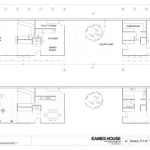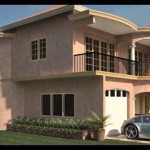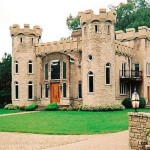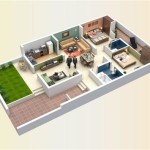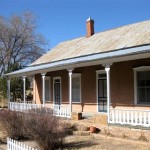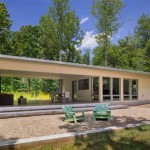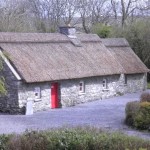Bee House Plans: A Comprehensive Guide to Building Homes for Pollinators
Bee populations face numerous challenges, including habitat loss, pesticide exposure, and disease. Providing supplemental housing can offer critical support for these essential pollinators. Understanding various bee house plans and their construction is key to creating effective and beneficial habitats.
Different bee species have different nesting preferences. Solitary bees, unlike honeybees, do not live in hives. These bees, which comprise the vast majority of bee species, typically nest in tunnels. A well-designed bee house caters to these nesting preferences, providing safe spaces for egg-laying and larval development.
The most common bee house design incorporates nesting tubes made from natural materials. These can include hollow stems like bamboo, reeds, or paper tubes. Drilled wooden blocks also serve as excellent nesting sites. The diameter of the nesting tubes should vary to attract a diversity of bee species. Generally, tubes ranging from 2mm to 10mm in diameter cater to the needs of various solitary bees.
Proper construction is paramount for a successful bee house. Untreated, seasoned wood is the preferred material for the house structure. Avoid using pressure-treated lumber, as the chemicals can be harmful to bees. The roof should have an overhang to protect the nesting tubes from rain and direct sunlight. Providing a back panel to the house further safeguards the nesting tubes and creates a more stable structure.
Placement of the bee house plays a crucial role in its effectiveness. Ideally, the house should face south or southeast to maximize morning sun exposure. This helps warm the nesting tubes and encourages bee activity. Mounting the house at a height of 3 to 6 feet off the ground offers protection from predators and keeps the nesting tubes within a comfortable temperature range.
Beyond the basic structure, several design elements can enhance the bee house's functionality and attractiveness. Adding a landing platform below the nesting tubes provides a convenient space for bees to land and enter their nests. A screen or mesh covering placed a few inches in front of the nesting tubes can deter woodpeckers and other birds from accessing the larvae within.
Maintenance is essential for ensuring the long-term health of the bee population using the house. Regular cleaning and replacement of nesting tubes are crucial for preventing the buildup of parasites and diseases. Old nesting tubes can be removed in the late fall or early winter, after the bees have emerged, and replaced with clean tubes in the spring.
While providing nesting tubes is the primary focus, incorporating other elements into the bee house plan can further support pollinator health. Planting a variety of bee-friendly flowers near the house provides foraging resources. A shallow dish of water with pebbles or marbles offers a safe drinking source for the bees.
Choosing appropriate materials for nesting tubes is critical. Avoid using plastic straws or other synthetic materials, as these can trap moisture and promote fungal growth, which can be harmful to developing bees. Natural materials like bamboo, reeds, and paper tubes allow for proper ventilation and regulate humidity within the nesting tunnels.
When drilling wooden blocks for nesting tubes, ensure the holes are smooth and free of splinters. Rough edges can injure bees and hinder their movement within the tubes. The depth of the holes should be approximately 6 inches to provide ample space for egg-laying and larval development.
Protecting the bee house from the elements is crucial for its longevity and the well-being of its inhabitants. Applying a coat of linseed oil or another natural sealant to the exterior of the wooden structure can help protect it from weathering and moisture damage.
Observing the bee house throughout the year can provide valuable insights into bee activity and inform future design improvements. Monitoring which nesting tube sizes are most utilized can help tailor future bee house plans to the specific needs of the local bee population.
Consider the local climate when designing and placing the bee house. In hotter climates, providing adequate shade during the hottest parts of the day can prevent overheating within the nesting tubes. In colder climates, ensuring the house is well-insulated can help protect the bees during winter months.
Building and maintaining bee houses can be a rewarding experience, contributing to the conservation of these vital pollinators. Careful planning and construction, along with consideration of the specific needs of local bee populations, are essential for creating successful bee habitats.
Exploring various bee house plans and adapting them to specific environments and bee species can further enhance their effectiveness. Continuing to learn about bee behavior and nesting habits is crucial for providing optimal housing solutions and supporting thriving pollinator populations.

Bee Box Plans Boxes Hives Houses

Mid Shore Habitat Bee House At The Inn Perry Cabin Chestertown

Beekeeping With The Warré Hive Plans For Constructing A

How To Build A Beehive Diy Family Handyman

Bee House Floor Plans

Mid Shore Habitat Bee House At The Inn Perry Cabin Chestertown

38 Diy Bee Hive Plans With Step By Tutorials Free

Honey Bee Hive Plans Keeping Beekeeping For Beginners Hives

Diy Native Bee House Garden Gate

Beehive Components Part I The Basics Of Building A Hive Dadant Sons

